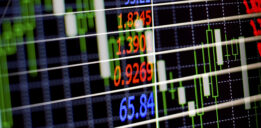Popular Initial Public Offering Letdowns Often Foreshadow the Next Stock Market Crash
Snap Inc (NYSE:SNAP) is hurting. The much ballyhooed company is dropping like a stone, destroying billions of investor equity with it. But in the bigger picture, could the decline be telling us something more? Quite possibly. It could be the market’s lonely cry that the next stock market crash is on the horizon.
The reason for this is that initial public offerings (IPOs) are often the canary in the coal mine in terms of market health. It’s not uncommon for low-quality or unheralded IPOs to get rejected. Not every stock is the next Apple Inc. (NASDAQ:AAPL). But when it happens to hyped, anticipated, and hot-sector companies, that’s a different story altogether. Snapchat was every bit of all those things, and this has some investors worried.
Also Read:
Stock Market Crash 2017? This Could Trigger a Stock Market Collapse
Warren Buffett Indicator Predicts Stock Market Crash in 2017
It wasn’t supposed to be this way for the Venice, California-based company. Shares were initially projected to open in the $14.00-$16.00/share range. That was later upgraded to $17.00-$19.00/share. By the time its exchange debut arrived, insatiable investor demand elevated the stock to a $23.50 to $24.50 a share open. (Source: “Snap soars nearly 50% after trading begins,” CNBC, March 3, 2017.)
After reaching an all-time high of $29.44/share, valuing the company at $59.0 billion, it’s been all downhill. To be sure, poor earnings are a big part of the story. Snapchat dropped almost $5.00/share (21.43%) the day following its first-ever earnings release. First-quarter revenue came up $8.4 million light, while net losses were $200.0 million more than expected ($2.2 billion vs. $2.0 billion). And yes, user growth slowed in the second half of 2016 due to increased competition from Facebook Inc (NYSE:FB). (Source: “Snap stock is tanking after its first-ever earnings report missed expectations,” Recode, May 10, 2017.)
Yet, many of these dynamics were already expected by analysts. The company was expected to incur huge losses in the foreseeable future, and competition from big media was expected. None of this was news to core institutional investors, who shoveled $3.4 billion into the company pre-IPO.
So why has market sentiment flipped? Could it be that investors are starting to scrutinize fundamental factors more closely? Such attitudes are usually seen at market tops, rather than at market bottoms.
Falling SNAP Shares Possible Early Indicator of Next Market Turmoil
Sometimes, it’s all about timing. Even the lowest-quality IPOs did amazingly well during the Tech Bubble if they came out at the right time. Anything connected to the Internet brought to market between 1995-early 1999 was guaranteed to be an instant triple-digit stock. The business model didn’t matter. In fact, the more outlandish and impossible, the more the market loved it.
But after market sentiment turned, the ludicrous business models of Internet companies started to get rejected by investors. Case in point: Kozmo.com.
Kozmo.com was a delivery service that promised to deliver a variety of goods to households within an hour. It was viewed as a new-age delivery service that would eventually challenge United Parcel Service, Inc. (NYSE:UPS) and FedEx Corporation (NYSE:FDX) for cartage supremacy. Kozmo secured about $280.0 million from investors, including $60.0 million from Amazon.com, Inc. (NASDAQ:AMZN) and $150.0 million from Starbucks Corporation (NASDAQ:SBUX). Obviously, several smart and talented executives loved the concept. (Source: “10 big dot.com flops,” CNN Money, March 10, 2010).
However, the market did not.
Citing losses of $26.0 million in 1999 and “unfavorable market conditions,” Kozmo.com withdrew its IPO ambitions. The promise of a huge payday from early investors was shuttled because the market cared about fundamentals again. The same pie-in-the-sky Internet models that were voraciously snapped up just 18 months ago couldn’t be given away. The fact that Kozmo.com laid off 900 of its 2,000-person workforce and shut down permanently in April 2001 is besides the point. Had it listed two years earlier, there’s no question its stock could have easily traded at triple digits.
And this brings us full circle to Snapchat. The euphoria that led to a crush of investor interest has dissipated. Shares are trading 60% off the all-time highs, in strong overall market conditions. And this was before the Snapchat IPO lockup was scheduled to give way. Now that the SNAP stock lockup has ended, anyone can sell shares without restriction. This promises to exert more downside pressure to prices.
Ultimately, the coming stock market crisis might be foretold by failing IPOs like Snapchat. Analysts will bend over backwards to give excuses why it’s failing. Many of these are legitimate. But in a truly strong and robust market, it wouldn’t matter. Investors would be accumulating based on potential rather than near-term results.
That is, unless the fundamentals are really mattering again.







